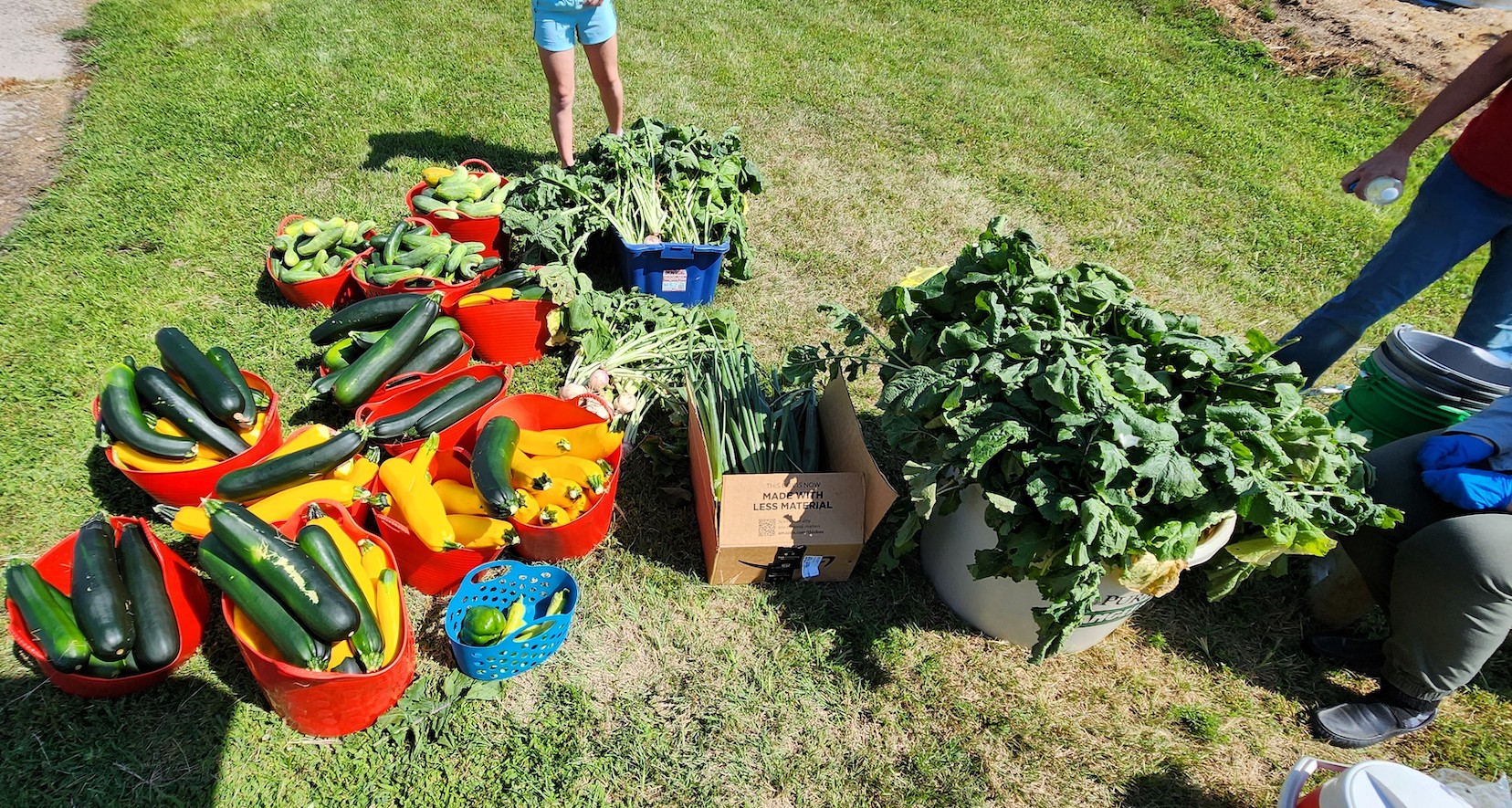
Produce from Nebraska Extension's donation garden in Hall County, Grand Island.
Nasrin Nawa |
September 29, 2023
Nebraska Extension's donation garden program, Growing Together Nebraska (GTN), helps provide food to individuals and families in need and strengthens nutrition education across the state. Now in its eighth year, GTN projects are located in 12 counties across the state. These projects are dedicated to cultivating fresh and healthy vegetables, fruits, and herbs intended for individuals who may have limited access to produce due to financial constraints.
In addition to providing produce donations, the program offers educational components helping recipients use the fresh produce in nutritious recipes.
Ashlynn Nikodym, an Extension Supplemental Nutrition Assistance Program-Education (SNAP-Ed) associate in the Nutrition Education Program, has been coordinating the garden in Hall County, Grand Island, for the past seven summers. She collaborates with others from Nebraska Extension, as well as Extension Master Gardener Volunteers (EMGV), and community volunteers to manage the garden's planting, harvesting, and distribution efforts within the community.
The GTN program delivers harvested produce to community partners, allowing individuals in need to access it directly. In Grand Island, the partners include Hope Harbor, a shelter for women and children, the Third City Community Clinic, and Goodwill Behavioral Health Services.
Molly Clark, operations manager at Hope Harbor, expressed appreciation for the donations, highlighting the significant impact on the community. “The fresh vegetables provided by the UNL Extension Center during the summer months contribute to the community's well-being,” she said.
During the summer, “we get gorgeous vegetables from the UNL Extension Center, and that feeds our community,” Clark said. “We have lots of people coming in and taking those really healthy veggies and taking them home.” Her favorite part is that “there is even the interaction that the next time they come to get them they tell us what they cooked with them.” The residents at Hope Harbor also incorporate the fresh produce into their communal meals, she said, enhancing the nutritional value of their shared dining experiences.
“With the cost of all food so high right now, fresh produce is the first thing people skip to save money,” Nikodym said. “The produce shared through GTN gives individuals the ability to consume fruits and vegetables and gain those nutrients without having to spend money or EBT benefits.”
Over the course of seven years, the program has donated an impressive 28,169 pounds of produce, primarily consisting of vegetables such as tomatoes, peppers, cucumbers, squash, green beans, potatoes, and onions.
The surplus produce that exceeds the needs of the program's three primary partners is redirected to other partner organizations in the community, including Veterans Affairs, Central District Health Department, YWCA, Grand Island Public Schools, and local churches with food pantries accessible to the broader community.
An integral component of this initiative involves conducting classes for partners’ clients, imparting knowledge about nutritious foods, and providing instructions for preparing healthy recipes.
In addition to providing information about the produce, classes cover topics related to general nutrition, including MyPlate, grocery shopping, reading the Nutrition Facts Label, food safety, physical activity, portion size and meal planning. When in-person classes are not an option, seasonal produce handouts are available with the fresh produce.
“Education also happens at the point of produce selection,” Nikodym said. “As produce is delivered, there are individuals ready to choose some to take with them. During this time, I enjoy having conversations about how the produce can be used, and what nutritional benefits are provided.”
Those exchanges are gratifying, Nikodym said, “as recipients share their plans for the produce and how it impacts their life.”